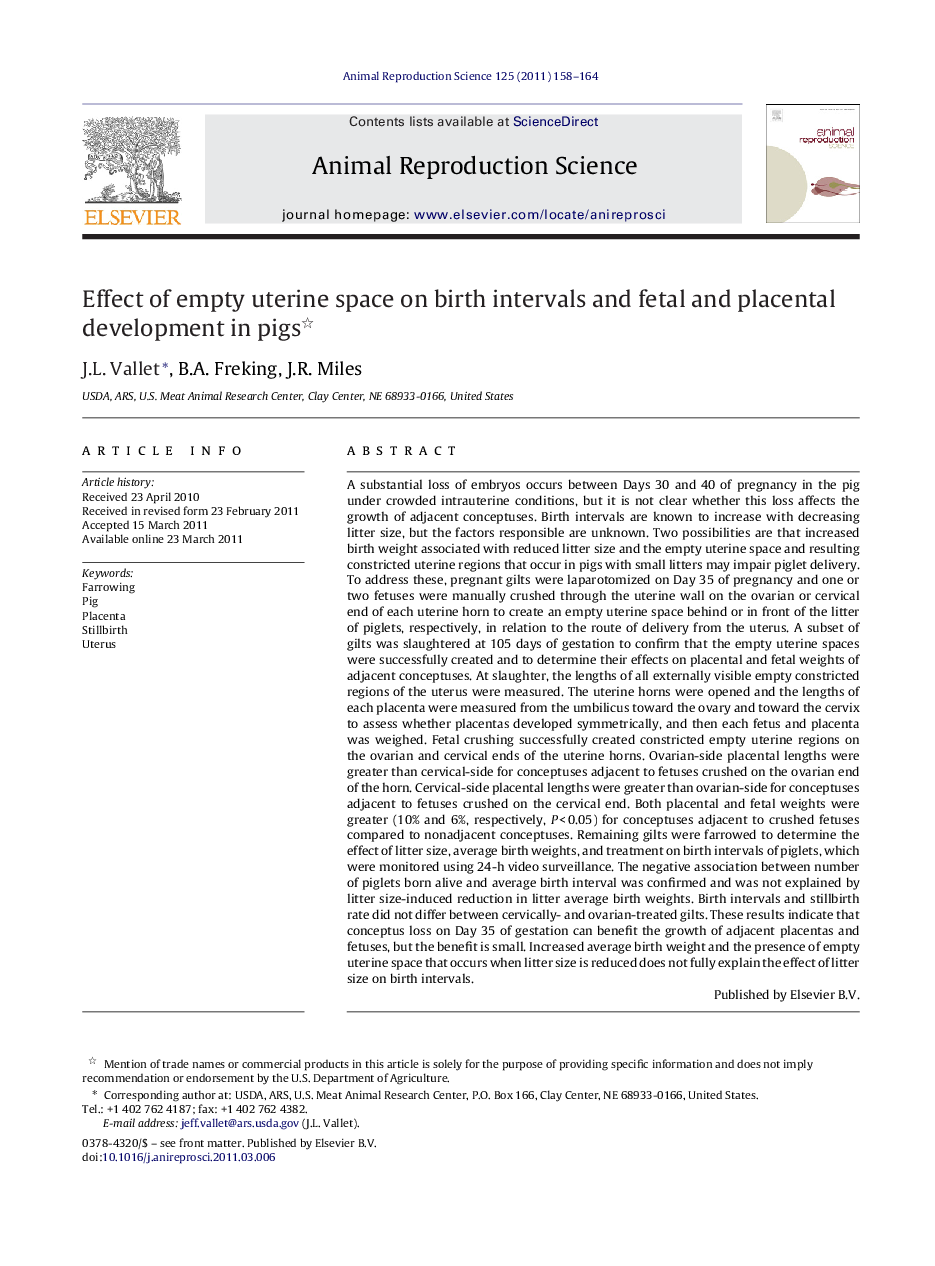| کد مقاله | کد نشریه | سال انتشار | مقاله انگلیسی | نسخه تمام متن |
|---|---|---|---|---|
| 2073450 | 1544773 | 2011 | 7 صفحه PDF | دانلود رایگان |

A substantial loss of embryos occurs between Days 30 and 40 of pregnancy in the pig under crowded intrauterine conditions, but it is not clear whether this loss affects the growth of adjacent conceptuses. Birth intervals are known to increase with decreasing litter size, but the factors responsible are unknown. Two possibilities are that increased birth weight associated with reduced litter size and the empty uterine space and resulting constricted uterine regions that occur in pigs with small litters may impair piglet delivery. To address these, pregnant gilts were laparotomized on Day 35 of pregnancy and one or two fetuses were manually crushed through the uterine wall on the ovarian or cervical end of each uterine horn to create an empty uterine space behind or in front of the litter of piglets, respectively, in relation to the route of delivery from the uterus. A subset of gilts was slaughtered at 105 days of gestation to confirm that the empty uterine spaces were successfully created and to determine their effects on placental and fetal weights of adjacent conceptuses. At slaughter, the lengths of all externally visible empty constricted regions of the uterus were measured. The uterine horns were opened and the lengths of each placenta were measured from the umbilicus toward the ovary and toward the cervix to assess whether placentas developed symmetrically, and then each fetus and placenta was weighed. Fetal crushing successfully created constricted empty uterine regions on the ovarian and cervical ends of the uterine horns. Ovarian-side placental lengths were greater than cervical-side for conceptuses adjacent to fetuses crushed on the ovarian end of the horn. Cervical-side placental lengths were greater than ovarian-side for conceptuses adjacent to fetuses crushed on the cervical end. Both placental and fetal weights were greater (10% and 6%, respectively, P < 0.05) for conceptuses adjacent to crushed fetuses compared to nonadjacent conceptuses. Remaining gilts were farrowed to determine the effect of litter size, average birth weights, and treatment on birth intervals of piglets, which were monitored using 24-h video surveillance. The negative association between number of piglets born alive and average birth interval was confirmed and was not explained by litter size-induced reduction in litter average birth weights. Birth intervals and stillbirth rate did not differ between cervically- and ovarian-treated gilts. These results indicate that conceptus loss on Day 35 of gestation can benefit the growth of adjacent placentas and fetuses, but the benefit is small. Increased average birth weight and the presence of empty uterine space that occurs when litter size is reduced does not fully explain the effect of litter size on birth intervals.
Journal: Animal Reproduction Science - Volume 125, Issues 1–4, May 2011, Pages 158–164